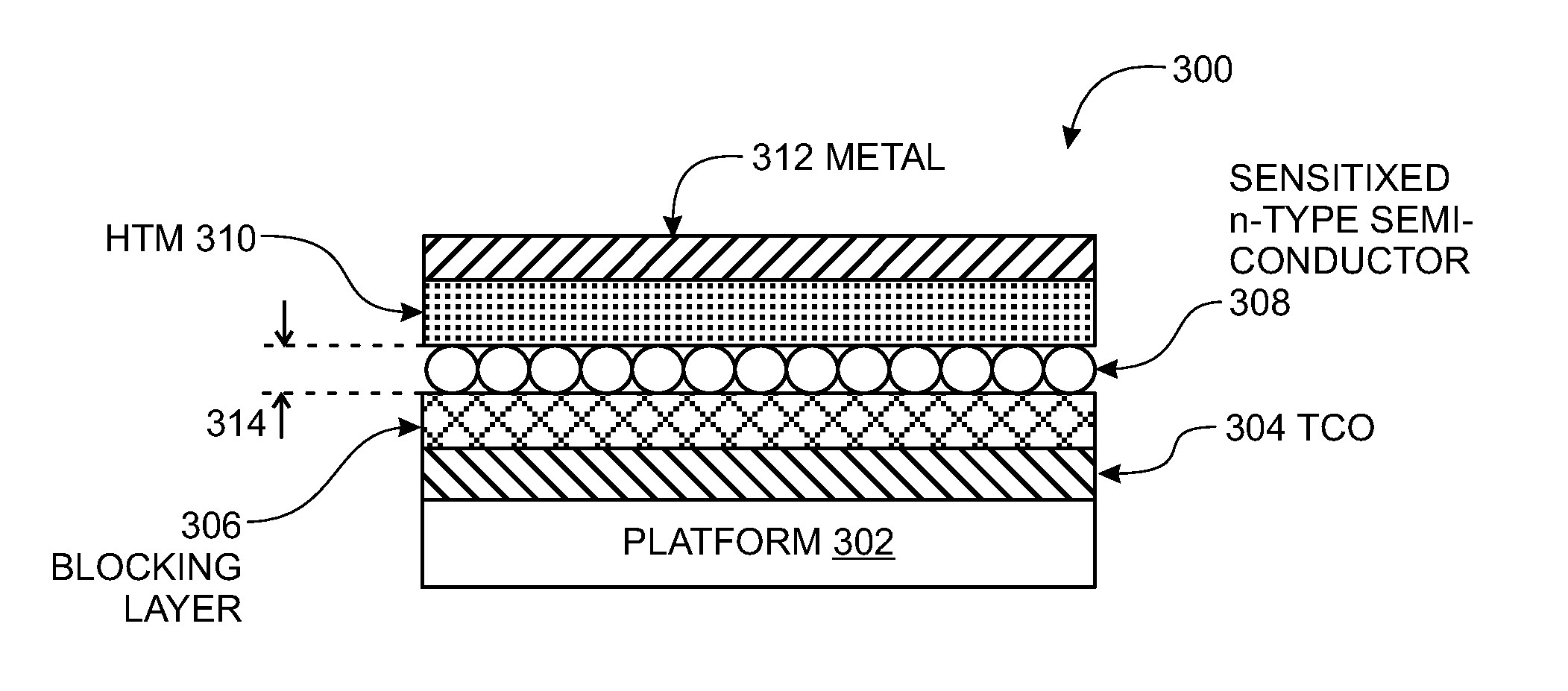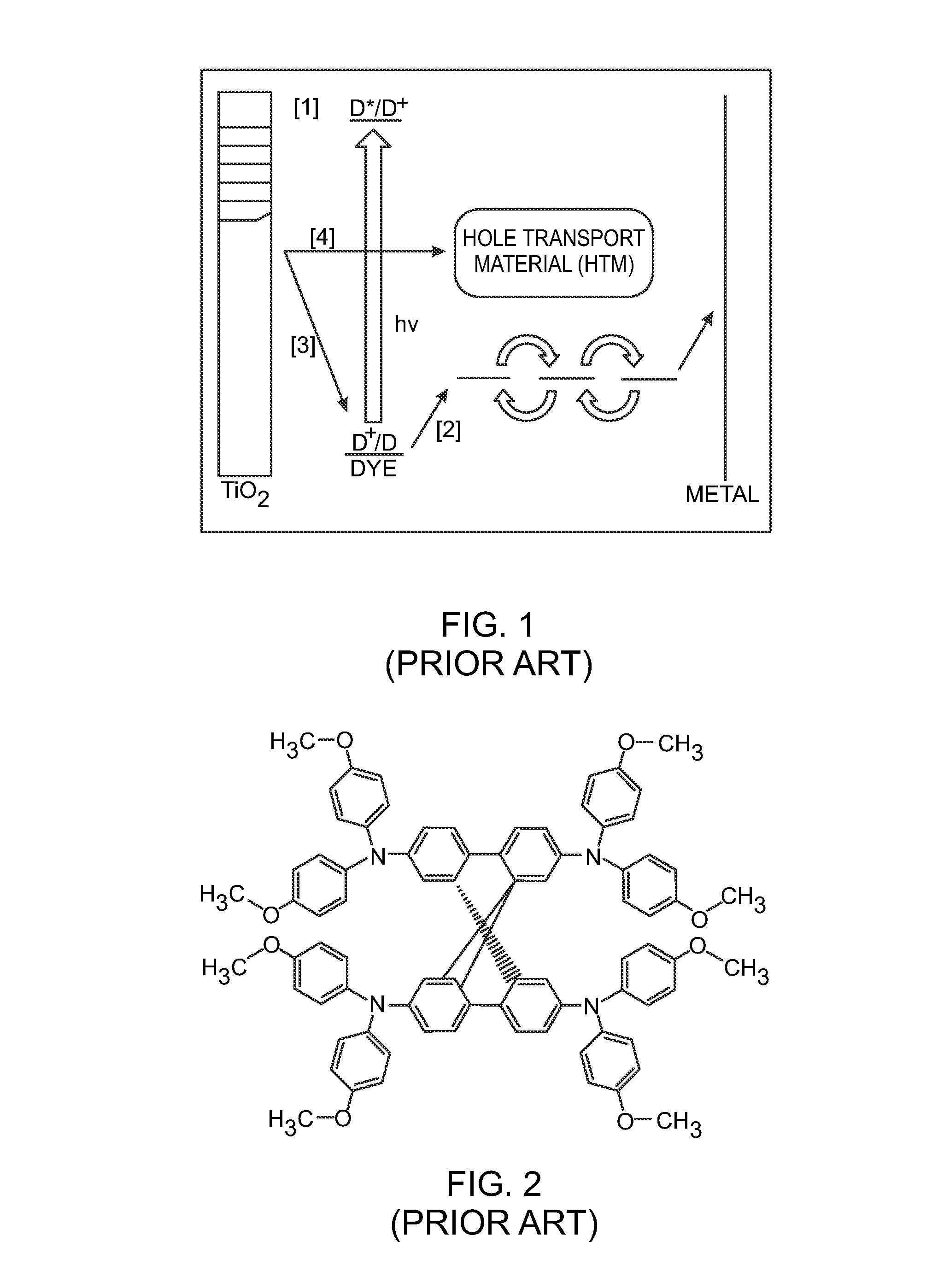Solid-State Dye-Sensitized Solar Cell Using Oxidative Dopant
- Summary
- Abstract
- Description
- Claims
- Application Information
AI Technical Summary
Benefits of technology
Problems solved by technology
Method used
Image
Examples
Embodiment Construction
[0039]FIGS. 3A and 3B are partial cross-sectional views of a solid-state dye solar cell (ssDSC) with a solid-state hole transport material (ssHTM). The ssDSC 300 comprises a transparent platform 302, typically made from glass or flexible material. A transparent conducting oxide (TCO) 304 overlies the transparent platform 302. Examples of TCO materials include fluorine doped tin oxide (FTO), and indium tin oxide (ITO). As shown in FIG. 3A, a blocking layer 306 overlies the TCO 304. The blocking layer 306 is electrically conductive, but prevents ohmic contact between the TCO and an ssHTM layer. A sensitized n-type semiconductor 308 overlies the blocking layer 306. The ssHTM layer 310 overlies the sensitized n-type semiconductor 308. A metal layer 312 overlies the ssHTM 310. For example, the metal may be Ag or Au. Alternatively, FIG. 3B depicts an ssDSC with no blocking layer.
[0040]The ssHTM 310 comprises a neutral charge first p-type organic semiconductor, a chemically oxidized first ...
PUM
| Property | Measurement | Unit |
|---|---|---|
| Fraction | aaaaa | aaaaa |
| Thickness | aaaaa | aaaaa |
| Transport properties | aaaaa | aaaaa |
Abstract
Description
Claims
Application Information
 Login to View More
Login to View More - R&D
- Intellectual Property
- Life Sciences
- Materials
- Tech Scout
- Unparalleled Data Quality
- Higher Quality Content
- 60% Fewer Hallucinations
Browse by: Latest US Patents, China's latest patents, Technical Efficacy Thesaurus, Application Domain, Technology Topic, Popular Technical Reports.
© 2025 PatSnap. All rights reserved.Legal|Privacy policy|Modern Slavery Act Transparency Statement|Sitemap|About US| Contact US: help@patsnap.com



